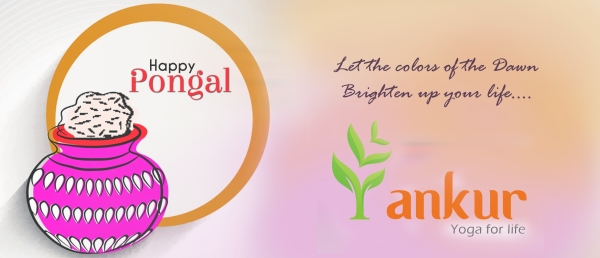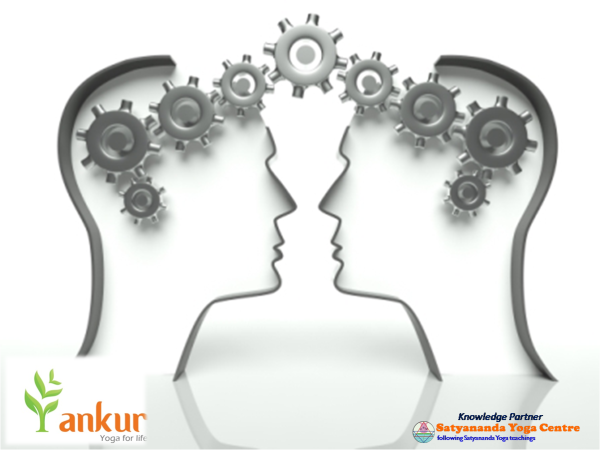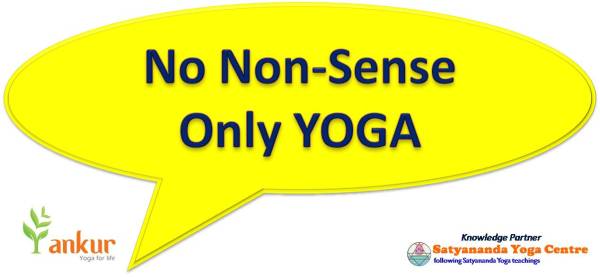Karthigai Deepam in Tamil and Karthika Deepam in Telugu, this festival of lights signifies lighting the lamp within. This post details the story behind this festival and the also the inner meaning conveyed
Yoga World Record… another testimony to ancient Indian wisdom
The feat of Yogaraj CP, is another testimony to the fact that Yoga helps build stamina and endurance by working on the physical, vital and mental domains, unlike other forms of exercise that work only on one aspect – the physical body.
Prime Minister Narendra Modi brought Yoga into greater focus by taking efforts to put an international official stamp on yoga through the declaration of 21st June as World Yoga Day. This is Raja Dharma and he should be commended for that achievement. CP Yogaraj, as a yoga practitioner did just that, commended Modi by dedicating this achievement to him.
Modern science and western world should be commended for helping us understand and appreciate through empirical evidences and experiments, various facts stated in Yogic and other ancient Indian scriptures. Several practices which were hitherto thought to be blind beliefs and ritualistic practices were proved to have sound scientific basis in the recent years. (The video in this link is only a representative sample.)
Just because we do not understand today the rationale and logic behind a cultural practice, should we shun that?
If we shun and not put that into practice how can that be preserved?
How can science, as it evolves tomorrow try to understand a non-existing practice?)
After Independence, while the Indian Scientific Community fell prey to the “pseudo-secular” dogma, and Indian community shunned various practices, western world started exploring various statements and claims of Indian scriptural truths through a sincere quest and open mind. This is true expression of scientific temper – trying to know and understand the unknown through the known with a spirit of inquiry. A facet that has to be developed by the Indian Scientific Community. The symposium on “Ancient Sciences through Sanskrit” at the recently concluded Indian Science Congress seems to be a ray of hope, a positive step in this direction.
Over centuries, as human civilization and modern man evolved, man’s understanding of the world and right ways of interacting with it is expressed, preserved and transmitted to future generations in the form of various cultures and their practices. Reasoning and science behind these practices may or may not have been stored in the scriptures of the world community at large. Isn’t it the responsibility of modern societies and scientific communities to try, explore and unravel the hidden truths behind the scriptural claims and cultural practices. One of the responsibilities of science is thus to help explore and understand one’s own culture and civilization better.
That probably is the right tribute, respect and gratitude one can express to the learned wise men of our ancient past.
Have you wondered how our ancient sages and seers understood not only the body, but also mind, energy, psyche and other aspects of our personality when the so-called ‘science’ and ‘scientific temper’ (as described in this article) did not even exist !?!?
And, when none of the modern gadgets and technological advancements existed, What was the technology, science or tool they possessed which help them make these advancements?
Would like to conclude this post with the following fact…
“It was generally believed that the earth was stationary and was the centre of the universe and all heavenly bodies revolved round the earth. But, Aryabhatta-1 held the view that the earth rotates about its axis and the stars are relatively fixed in space. The period of one rotation of earth around its axis according to Aryabhatta is 23 hours, 56 minutes and 4.1 seconds. The corresponding modern value is 23 hours, 56 minutes and 4.091 seconds.
– Aryabhatta – Aryabhatiya, Gitika Pada”
Posted by Ankur on February 27, 2015
https://ankurlearningsolutions.wordpress.com/2015/02/27/yoga-world-record-another-testimony-to-ancient-indian-wisdom/
The ‘So-Called-Secular’ myths surrounding Yoga
It is commendable that Rajasthan Government has made Suryanamaskar compulsory in Rajasthan Schools. Way to go for holistic development of our children. Suryanamaskar made compulsory in Rajasthan Schools.
Media and political outfits may compete with each other to woo their customer base through non-factual statements and controversial-sensational news. However, it is in the interest of the average person to make a sound judgement in accepting or rejecting such statements.
175 countries (highest in the history of UN) supported the motion to declare 21st June as World Yoga Day. What more proof is required to show that Yoga is beneficial to all irrespective of faith, caste, creed, colour, gender, etc.,? Is it not proof enough that Yoga is a secular discipline.
Surya Namaskar is literally translated as Sun Salutation. Ancient Indian way of life – termed Hinduism by British, has integrated reverence to nature into everyday life-style. I guess people will agree that Sun is secular. Science agrees that Sun is the source of life and energy on this planet. In the name of showing reverence to this life-giving source, our ancestors has developed certain body movements to energise the body as well as making it fit and flexible. Numerous experiments conducted across the world has proven that Surya Namaskar results in comprehensive benefits to the body-energy-mind-intellect complex. Anyone having all the above and wants them function at optimal levels can do surya namaskar. You need not consider sun as god to do surya namaskar.

Image Courtesy: http://www.physiodiary.com/surya-namaskar/
And it is a myth that Surya Namaskar cannot be done without chanting. One may try doing, daily 6 rounds of Suryanamaskar without chanting, for four weeks and observe for themselves changes in their body-energy-mind complex.
(Shh….. it is a secret. Even without chantings, Suryanamaskar and all aspects of yoga like asanas, pranayama, meditation, etc., are beneficial to us.)
To conclude, I repeat…
Anyone who has body-mind-intellect complex and has life-force in that has the option to do yoga daily and reap its benefits.
Posted by Ankur on February 20, 2015
https://ankurlearningsolutions.wordpress.com/2015/02/20/the-so-called-secular-myths-surrounding-yoga/
Celebrating Matribhasha Divas – 21st Feb in Schools
In a country as diverse as India with more than two dozen commonly spoken languages and hundreds of local languages and dialects; with people spread and settled across the country where their mother tongue need not necessarily be the official language, celebrating international mothers language day in schools – Matribhasha diwas on 21st Feb is a welcome initiative.
http://cbseacademic.in/web_material/Circulars/2015/13_Matribhasha%20Diwas.pdf
This initiative if well received and implemented by the schools will provide opportunity for children to deepen their connect with their mother tongue. Mother tongue is the best way one can relate to one’s culture. It provides the most convenient medium of communication with the outer world. It also provides for uninhibited and free expression of self.
Celebrating the festival as envisaged in the circular also helps children develop respect and regard to the diverse cultures and traditions of various language speaking people in the country. This festival will also motivate children and provide an opportunity for parents to educate their children about their mother tongue.
Looking forward for the event to be well received by schools across the country. Laud the initiative by CBSE. Hope other educational boards in the country also emulate the example.
WISH YOU ALL
‘HAPPY MATRIBHASHA DIWAS’
‘INTERNATIONAL MOTHER LANGUAGE DAY’
Posted by Ankur on February 19, 2015
https://ankurlearningsolutions.wordpress.com/2015/02/19/celebrating-matribhasha-divas-21st-feb-in-schools/
uvAcha Quiz – 12
Vikramshila University, an ancient university of India whose ruins are situated in present day Bihar was founded by which Pala ruler
- Dharmapala
- Devapala
- Mahipala
- Govindpala
Shilbadra was the head of which university of ancient India
- Vallabhi
- Nalanda
- Vikramshila
- Takshashila
In ancient India, Nalanda University was a great centre for the study of –
- Hinayana Buddhism
- Mahayana Buddhism
- Jainism
- Hinduism
This university campus was spread across three adjoining hills – Lalitgiri, Ratnagiri and Udayagiri
- Odantapuri
- Somapura
- Pushpagiri
- Vallabhi
This university was well-known for its specialized training on the subject of Tantrism
- Vallabhi
- Odantapuri
- Takshashila
- Vikramshila
Answers for uvAcha quiz – 11
(a) Kathakali (b) Kuchipudi (c) Manipuri (d) Bharatnatyam (e ) Mohiniattam
Posted by nityalatha on January 14, 2015
https://ankurlearningsolutions.wordpress.com/2015/01/14/uvacha-quiz-12-2/
Palming
Sit erect with your back straight. Close your eyes gently. Concentrate on your natural breathing – inhalation and exhalation. Count 11 breaths.
Now rub your hands nicely to generate heat. Place the palm slightly cupped on your closed eyes gently. Ensure that the palms are placed over the eyes in such a way that there is no gap for light to enter. Do not press the eyeballs. Allow eyes to relax in complete darkness. Concentrate on your breathing and feel the warmth of the palms over your eyes.
This practice helps in
- relaxing your mind and body
- removing dark circles around your eyes
- adds glow to your face
- makes you feel rejuvenated quickly
Posted by nityalatha on January 14, 2015
https://ankurlearningsolutions.wordpress.com/2015/01/14/palming/
Sankranti – Dawn of a new Beginning
Pongal / Sankranti is more than new clothes, mouth-watering sweets, TV, latest movies, etc., that go with any festival. It is even more than signifying harvest or harvest festival, as it is popularly known. It marks the dawn of a new beginning…
We need to understand this in light of
- The concept of time as understood in this part of the world and
- The month-long Thiruppavai / Margazhi / Ayyappa festivals which precedes Pongal/Sankranti
First about the concept of time…
As a day is roughly divided into 12 hours of day and 12 hours of night, a year is divided into six months of day and six months of night.
Roughly coinciding with summer and winter solstices, the period between Jan 15 and Jul 15 is called Uttarayanam or ‘day’ part of the year. The period from Jul 15 to Jan 15 is called Dakshinayanam or ‘night’ part of the year. Considering this the month ‘Margazhi’ falling between Dec 15 to Jan 15 is the pre-dawn hours of the year.
For ages Indians considered the pre-dawn period very auspicious and suitable for meditation and contemplation. Science has now understood and affirms this with predominance of alpha-rays in the environment, changes in ozone layer and other conducive changes in physical, physiological and psychological nature of our body. The same holds true for the month of ‘Margazhi’ which is the pre-dawn period of the year. This is a period marked with lots of festivals and celebrated world over as the divine period of the year.
Significance of the month of ‘Margazhi’ and Thiruppavai…
What is so special about this month? What should one do in this month? Is this month all about rituals and festivals?
As one meditates, rejuvenates and plans for the day during the pre-dawn hours, one need to reflect, ponder, meditate, rejuvenate and plan for the year ahead during this month.
The way to do this is symbolised through the 30 pasurams (stanzas) of Thiruppavai, which are rendered and pondered upon, one on each day. The 30 pasurams of Thiruppavai are but 30 steps to develop the quality of ‘Sattwa’ guna in us. Sattwa guna is signified by the highest qualities – love, care, compassion, empathy, intuition, creativity, planning, all-inclusiveness, etc., one should strive to attain to lead a happy life. In nutshell, it talks about
- the need to approach a mentor/guru
- qualities of a good mentee/student
- qualities of a good mentor/guru
- right way of approaching a mentor/guru
- what should one learn from his/her mentor/guru
The goals may be spiritual / material, but the essence of this learning is equally relevant to both. Based on one’s goal, one can reflect upon and plan for the year ahead.
In Tamil it is said ‘Thai pirandal vazhi pirakkum’. It is translated as the birth of ‘Thai’ (the month after Pongal), will open the way forward. As the new harvest also comes home during this period, it is looked forward to with lots of hopes to solve problems. Problems are solved not by following the rituals, but by understanding the significance behind and integrating it into our daily lives.
One need to use this month of festivities and prayers to relax, reflect, ponder, seek necessary guidance, plan and prepare to face the year ahead with rejuvenated vigour and confidence. It is probably for this reason, no personal celebrations like marriages, house-warming ceremonies, naming and cradling ceremonies, etc., are planned during this month. One is provided with enough time to consolidate on the experiences in the year that has gone by, invoke blessings of the divine and start anew with arrival of Pongal or Sankranti.
Another important festival of this month is Ayyappa vratham which also culminates with makara jyothi on the day of makara sankranti / pongal. Having a darshan of makara jyothi is symbolic of seeing the light at the end of the tunnel after a month-long penance.
Posted by Ankur on January 14, 2015
https://ankurlearningsolutions.wordpress.com/2015/01/14/sankranti-dawn-of-a-new-beginning/
Why should we not learn yoga from a book or dvd?
The other day my yoga teacher shared an interesting experience. A woman from a club called him to conduct a yoga awareness session ACOGYT (Awakening Call of Golden Yoga Tradition) for her members. She had a strange request. He shouldn’t talk during the session as their members can’t understand English. He was requested to directly teach the practices. Wondering how to conduct an introductory awareness session without talking, he arrived at the venue. Ten minutes into the session he figured that most of the members can understand English. He went ahead with the session in the typical ACOGYT way predominantly interactive with some practices interwoven to make it experiential.
By the end of the session, the audience was enthralled. They were all physically, emotionally, intellectually and psychically charged. The organiser approached him in the end and apologised, ‘I didn’t know you speak so well. I didn’t want my members to get bored. Please do not take it otherwise. Thank you so much for the wonderful session’.
Similar is the experience during several ACOGYT sessions – even sceptic and uninterested members among audience end up getting involved and inspired. This is because as an expert trainer he knows to connect with his students / audience.
Yoga is a powerful tool to positively influence, integrate and harmonise all facets of human personality – physical, physiological, vital, mental, emotional and intellectual. This requires the teacher connects with the audience. We normally start any yoga session with the prayer – “Sahana vavatu, Sahanau Bhunatthu, Saha viryam Karavavahai, Tejasvinavadheethamasthu, Mavidvishavahai”. Through this prayer both the teacher and student seek to connect with each other.
Each individual is unique and has different needs. Same practice administered with varying levels of intensity can have varying effects on the physical and mental level of the student. A good yoga trainer understands this well and gives necessary inputs gauging the needs of the student.
Moreover, yoga deals with energy levels of the student. A yoga trainer invigorates the student during a session by connecting with each of his students.
Caught up with the new trend of e-learning and distance learning one is frenzy about learning yoga from a book, a TV show or DVD. These can definitely not help achieve the objective of Yoga? Yes, one can use these for additional inputs to be clarified later with the teacher.
If you are serious about learning yoga the right way and benefit most from Yogic wisdom, you need to get hold of a good trainer nearby, and not pick up a book or DVD from a nearby store.
Posted by balajigv on January 14, 2015
https://ankurlearningsolutions.wordpress.com/2015/01/14/why-should-we-not-learn-yoga-from-a-book-or-dvd/
Stop spreading nonsense in the name of Yoga
Do we want to benefit from Yogic Wisdom? or Do we want the capital houses to exploit us in the name of Yoga?
Yoga is a treasure-house of time-tested wisdom handed to us by our ancestors. It can make one’s life meaningful, happy and holistic.
Several traditions of Yoga are in practice today. About a century ago, Yoga was restricted to sages and saints in caves and forests. It was not within the reach of common man. Some people had the opportunity of getting into the depths of yoga. They were blessed with varying experiences. They were convinced that Yoga can be a great to tool to make our lives better. Based on their experience and understanding several traditions and approaches to Yoga emerged to suit varying needs of people. While some traditions focussed on one or two aspects of human personality, some like Satyananda Yoga followed a holistic approach. While some focussed primarily on research, some simply followed what is said in scriptures without going for empirical validation, rare few followed an integral approach.
With emergence of repeated empirical evidences and experiential proofs from across the world on efficacy of yoga, it started gaining popularity. It has reached a stage today where maximum countries in UN had pledged their support to declare June 21st as World Yoga Day. A proud moment in the re-emergence of a great wisdom to make the life of humanity saner, happier and peaceful.
Or is it really so?
Has Yoga become a name or buzz word to make a quick buck in the market place? Has the term Yoga lost its sanctity in the hands of capitalist houses?
Are the multitude of yoga trainers emerging in the market place aware of the scope and depths of yoga? Or are they simply trying to make a quick buck by learning a dozen of asanas to proclaim as yoga trainers?
Worse still is the trend to give some nonsense by adding yoga as a suffix to what they have to offer. I was shocked to read in last week-end edition of Times of India about some emerging trends.
People are trying to popularise drugs and smoking in the name of ganja yoga, spreading nudity in the name of nude yoga and what not… Not to mention about some other forms of business products emerging in the name of yoga – Power Yoga, Swimming pool Yoga, etc.,
Can we stop the spread of nonsense in the name of yoga? Probably the question should be how can we stop spreading nonsense in the name of yoga?
Regulating the spread of nonsense in the name of yoga is each one’s responsibility. It is not a service one is doing to Yoga but to themselves and their fellow beings. One has to do a basic research or study, validate the claims of yoga trainers and studios with freely available popular knowledge, exhibit caution and restraint from getting attracted and lured to marketing gimmicks.
Yoga is a valuable science that can make our lives better and let that be so…
Happy YOGA Life…
Posted by balajigv on January 13, 2015
https://ankurlearningsolutions.wordpress.com/2015/01/13/stop-spreading-nonsense-in-the-name-of-yoga/





